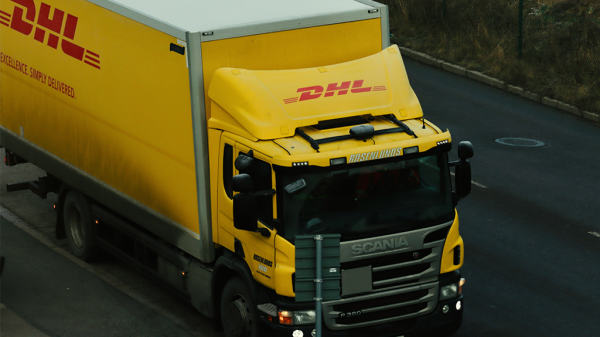 I recently needed a refresher in this area, and thought I would pass along some nuggets that help me. Hope it’s helpful to you as well.
I recently needed a refresher in this area, and thought I would pass along some nuggets that help me. Hope it’s helpful to you as well.
Miscommunication is one of the biggest time sucks for service providers. Remember, communicating is only effective when the other person understands *exactly* the message you want them to understand.
Any communication in any form is subject to interpretation, so to mitigate misunderstanding it helps to level-set with clients, particularly if you are working with them for the first time.
It’s about them, not you
At the onset of a new client relationship spend some time discussing and agreeing upon your communication ground rules, so each of you understands exactly how and when you will communicate, particularly around frequency, method and events.
When you will communicate
During the transaction process, do you reach out if there is nothing to report? The answer is up to your client. They may appreciate a ping every now and again to let them know progress (or lack thereof) so ask them.
It’s also important to set expectations as to the length of time it will take for you to respond to them. Is it within four hours or one business day? What if they reach out in the evening or over the weekend? Let them know then stick to it.
On the flip side, it’s fair to ask them when you can expect a response to your communication.
How you do what you do
Believe it or not, everyone is not connected 24/7 to email. Some prefer phone calls to email. Some don’t text (gasp). This is something to understand at the onset. I’m of the opinion that as the service provider, I need to bend to the needs of the customer.
Taking a day off?
Let them know you will be unavailable prior to your day off and give them the name of a person that can answer their questions.
What if it’s important?
Typically, I let clients know if there is a pressing matter, I will phone them. If I reach voice mail, I will leave a message then follow that up with an email. Remember, if it is a pressing matter make certain to communicate when you need to hear back.
Respect the recipient
Don’t use jargon, three letter acronyms or technical terms. This will create back and forth communication for explanation which is frustrating to both parties.
Less is more
If sending an email, avoid preamble, lengthy explanations or an overuse of adverbs. If you can say it in ten words, don’t use 30.
Imagine how you would deliver the message in a short elevator ride, and then compose. If it can’t be communicated thoroughly in a few words, call them. If the communication is of a nature that requires written back up, follow up the call with a quick recap.
If you must send a long email, begin with an opening sentence that tells them the points you need to cover:
- Use bullet points, one per point
- The bullet points should not dive into what, how or why
- The bullets should be followed by a sentence that tells them exactly what you need them to do, think or know
In addition to what you need them to do, think or know, the sentence just below the bullets should also include a timeline, if necessary.
Check it
Proof read your email. Running spell check is important, but may not catch grammatical errors. Don’t make your client believe you are careless or uneducated by not taking a few moments to proof read.
A personal pet peeve
Do NOT forward an email string to a client with “See Below”. If it’s important to show proof of a conversation, forward the email and provide a summary at the top. Respect their time.
p.s. if you really want them to read something, or drive a point below, add a post script. I’ll bet many of you skimmed the article, but read this post script!
p.p.s. the pet peeve is what prompted this post. A vendor sent me a seven-deep email chain with “see below”. I replied asking for a summary.
Brandie is an unapologetically candid marketing professional who was recently mentioned on BusinessWeek as a Top Young Female Entrepreneur. She recently co-founded consulting firm MarketingTBD. She's held senior level positions with GE and Fidelity, as well as with entrepreneurial start-ups. Raised by a real estate Broker, Brandie is passionate about real estate and is an avid investor. Follow her on Twitter.




































cjbirk
March 26, 2010 at 2:58 pm
Some great points throughout. It’s become so easy to just assume that people send and receive messages the same way we do, both in terms of the delivery mechanism and the intended meaning. My email and social networking tools are up in browser tabs from sunrise to sunset and beyond. That’s not everyone’s daily experience.
Also think your point about brevity and conciseness is key. Bullet points are our friends, especially during those times when there’s a lot of ground to cover. Guiding people to and through the information is essential.
Brandie Young
March 27, 2010 at 3:38 pm
Thanks for taking the time to comment. It is easy to forget that not everyone can read your mind! (oh, perhaps that isn’t always a bad thing to!)
Michele O'Neill
March 26, 2010 at 8:03 pm
I loved this article! I found myself laughing and shaking my head in agreement at many of the points!
Brandie Young
March 27, 2010 at 3:42 pm
Thanks, Michelle! It’s usually only @GwenBanta that gets the laughs, so I’m honored!
Rob McCance
March 27, 2010 at 8:07 am
You have to adjust for each client. Some will even get ticked with the 10-word perfect summary reply, even if it’s immediate.
Too short.
Brandie Young
March 27, 2010 at 3:43 pm
Hi Rob – I absolutely agree. And, the fact is you can’t please everyone. But, hopefully if you’ve agreed upon this at the onset, you can remind them of that, then adjust as necessary. Thanks for commenting!
Gwen Banta
March 27, 2010 at 1:54 pm
Excellent advice, Brandie! I’m so glad you reminded everyone that many people still communicate via telephone. There is a personal touch there that cannot be conveyed through type; and often the tenor of a message is misunderstood in an email or text. If someone has not returned an email, we should always follow up with a call, but many of us have become too lazy to do so. Yes – KEEP IT BRIEF. As as a fiction writer, I tend to add descriptions and commentary, which I am sure most can do without. And we have all been victims of the rambling phone call. Beware, friends – eventually people will learn to hang up half way through the message. Now, if you haven’t bailed on my ramble, Brandie, I especially love the Pet Peeve…of which I have been guilty. This week I’m going to start polishing my communication skills. Thanks! P.S. Brevity is Bliss. (Note the application of a P.S. as taught.)
Brandie Young
March 27, 2010 at 3:46 pm
Thanks, @GwenBanta ! Very flattering coming from you. You hit spot on – we shouldn’t assume tone in a written communication, but I think we all do from time to time. Sounds like I’m similar to you … I have a tendency to overuse adverbs. I just go back and strip them out.
p.s. You rock.
Joe Loomer
March 27, 2010 at 2:14 pm
Excellent, awesome, stupendous! Great one Brandie!
On a recent visit with a good friend of mine from my Navy days, I asked him why he hadn’t updated any of his facebook stuff in months. He told me his 24 years in the Navy as an IT guru made him hate to even think of getting on a computer when he goes home. This from someone that can run rings around most of when it comes to tech-savvy-ness. He’s great at it, rose to the highest enlisted rank because of it, but puts it down when he goes home. He’d rather I call him than email him. Thanks Brandie, and thanks Master Chief Warrick!
Navy Chief, Navy Pride
Brandie Young
March 27, 2010 at 3:50 pm
@JoeLoomer … Gasp … you mean your friend wants to *speak* with you personally? As in hear your voice? What is this world coming to? 😉 All kidding aside, knowing that he prefers calls, then calling him demonstrates a nice effort, one which I’m sure he appreciates.
Bruce
March 27, 2010 at 5:40 pm
Very good information. All to often we forget what our target audience prefers. It’s been my experience that most clients prefer you to be brief, be clear and be gone. Be that email, text or phone call. Not the case for all clients but we definitely need to know what our clients prefer or they’ll become another agents client.